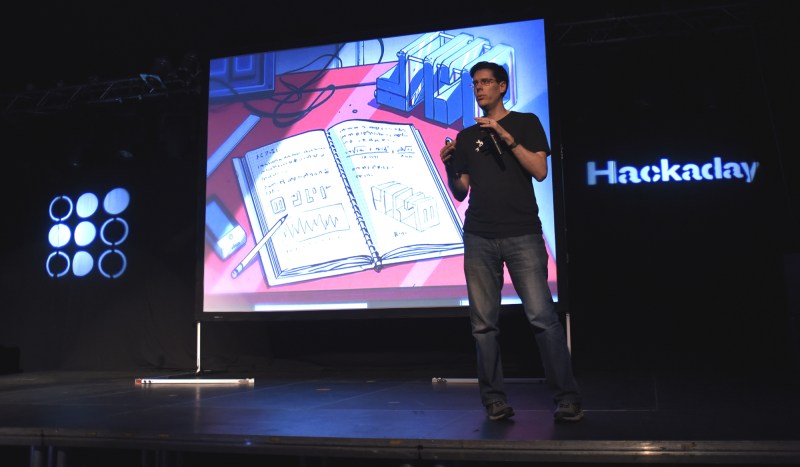The Hackaday Belgrade Conference was an amazing success. For proof, you need look no farther than the slate of talks that we have been publishing over that past several weeks. Each looks at different angles of the hardware universe; what does it mean to create hardware, where have we been, where are we going, and where does inspiration for the next great design come from?
The talks have now all been published and collected into one video playlist; it was an intense day of talks all caught in one streaming frenzy. But if you can’t make it through in one sitting, I’ve also listed the individual talks after the break so you that you may pick and choose.
There are, however, two talks that have just been published this afternoon. These are the opening remarks presented by Aleksandar Bradic and the closing remarks which I presented. When we meet people we’re often asked about what is going on behind the scenes. It’s really easy to think that nobody cares about what it takes to pull together a conference, run an amazing engineering challenge, or how we decide what we think matters when looking to the future. Alek covers the back story of how Supplyframe and Hackaday came together, as well as what led us to choose Belgrade for this conference. I discuss what I think is a core virtue of Hackaday; the free and open sharing of information and ideas. It’s a concept I believe in, and the most noble of reasons for documenting your work so that others may build upon your knowledge and skill.
Hackaday | Belgrade went beyond what we even considered possible. It joins the 2016 SuperConference (whose talk videos have also been published) as a shining example of our strong, active, and engaged community who want to spend their time enabling everyone — hackers, designers, and engineers alike — to succeed.
Hackaday | Belgrade Conference Talks
Hackaday would like to extend a special thank you to Milan Maletic for editing all of the talk videos.
The complete talk video playlist includes:
- Opening Remarks: Aleksandar Bradic | video
- One-Armed Embedded: Ending the 8 vs 32 Bit Argument: Mike Szczys | video | article
- Creation, Fabrication…. polarization illumination: Sophi Kravitz | video | article
- Top Down Electronics: Chris Gammell | video | article
- Hackaday Belgrade Badge Hacking: Voja Antonic | video | article
- Forward Futures: Phoenix Perry | video | article
- Long Road to the Internet: Dejan Ristanovic | video | article
- Hacker’s Friendly OSHW DIY Modular Laptop | video | article
- Making the Laser Light Synths: Seb Lee-Delisle | video | article
- How to Eat Your Own Face: Navid Gornall | video | article
- Interactive Digital Storytelling Systems: Paulina Great Stefanovic | video | article
- Open Source Clinical-Grade Electrocardiography: Peter Isza | video | article
- Reinventing the VHDL (badly): Philip Peter | video | article
- Designing a High Performance Parallell Personal Cluster: Kristina Kapanova | video | article
- Retrotechular: 1950s Video Projection Technology: Mike Harrison | video | article
- Closing Remarks: Mike Szczys | video
















How one can pronounce you surname? Please guide us.
You can hear it in the first video, at 5:36.
I was in doubt for some time also.
Thanks, Voja. Waiting for more articles from you.
FYI: http://www.pronouncenames.com/pronounce/szczys
or at 5 seconds in the 2nd video
You can call me Mike.
But if you still want to know, it is pronounced: “Stish”
I don’t kown how to use the International Phonetic Alphabet but I think that is pretty close.
LOL… I just imagine you talking to someone on the radio, and the other party asks you to spell your last name using the ITU phonetic alphabet or any radio communications telephony alphabet. That’s going to confuse the hell out of them. Say again; I thought you said stish?
https://www.youtube.com/watch?v=GlOoSsfU6cM
There were also multiple people with cameras walking around. Was any one of them taking pictures for HaD, or were they all just individuals?
I was one of the people walking around with a camera. But we did hire one still photographer and another to run the video recordings.
I could have a lot of content I could publish on the web, if I had documented the projects at the time. Of course at that time self publishing using print wasn’t on the radar of practicality, much less publishing to a world wide computer network.